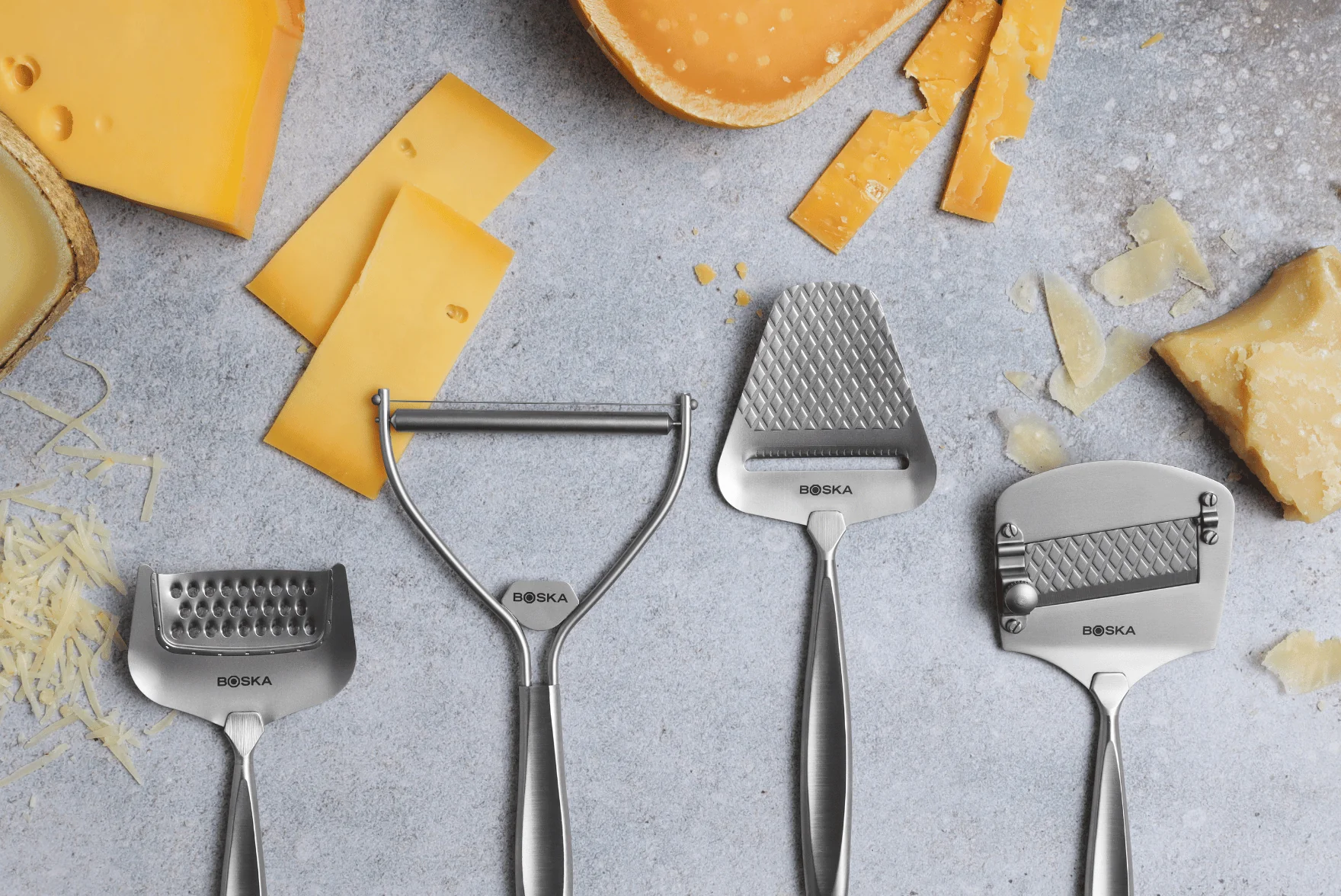Whether you’re a cheese enthusiast or just someone who enjoys a well-prepared charcuterie board, a quality cheese slicer is an essential tool. Achieving uniform, clean slices enhances not only the presentation but also the texture and flavor experience. In this article, we’ll break down the top 5 cheese slicers, covering key factors like build quality, design, and functionality. We’ll also discuss the importance of cheese slicer wire and the challenges in selecting the best cheese slicer for your needs.
Contents
Toggle1. Wire Cheese Slicers: Precision and Elegance
Why Wire Matters:
Wire cheese slicers are popular for their ability to produce thin, even slices. The tension and quality of the wire significantly impact performance. Stainless steel wires tend to be more durable and resistant to rust, ensuring longevity.
Pros:
- Ideal for soft to semi-hard cheeses.
- Provides clean, smooth cuts.
- Often adjustable for different slice thicknesses.
Cons:
- Wires can snap with excessive pressure.
- Not suitable for very hard cheeses.
Trade-Off:
Balancing durability with flexibility is crucial. A sturdy wire offers consistency but may require periodic replacement, especially with frequent use.
2. Adjustable Roller Cheese Slicers: Versatility at Its Best
Key Features:
These slicers feature a handle with an adjustable roller, allowing you to control slice thickness. They often come with stainless steel blades instead of wires, which makes them versatile for various cheese types.
Pros:
- Customizable thickness settings.
- Effective for both soft and hard cheeses.
Cons:
- Requires more hand strength for harder cheeses.
- Blade maintenance is essential to avoid dullness.
Considerations:
The challenge here is maintaining blade sharpness while ensuring ease of adjustment. Users should weigh the need for precision against the effort required for slicing harder cheeses.
3. Board-Style Cheese Slicers: Stability and Control
Overview:
These slicers typically include a cutting board with an integrated wire or blade mechanism. The board provides a stable base, making it easier to handle larger blocks of cheese.
Pros:
- Stability for consistent slicing.
- Often includes measurements for precision.
Cons:
- Bulkier and requires more storage space.
- Wire tension needs regular adjustment.
Impact:
The stability of board-style slicers ensures accuracy but can be less portable. For regular use in a kitchen setting, they offer reliability and control.
4. Handheld Cheese Planers: Simplicity and Convenience
Design:
These are simple tools with a flat, blade-like edge and a handle. They are best for semi-hard to hard cheeses.
Pros:
- Easy to use and clean.
- Compact and easy to store.
Cons:
- Limited control over slice thickness.
- Not ideal for soft cheeses.
Balancing Factors:
Handheld planers provide ease of use but might lack precision. They’re ideal for quick slicing but may not meet the needs of those requiring uniform slices for presentation.
5. Electric Cheese Slicers: Efficiency for Larger Quantities
Functionality:
These slicers are equipped with electric blades, allowing for rapid slicing of large volumes of cheese. They’re perfect for commercial kitchens or serious cheese aficionados.
Pros:
- Fast and efficient slicing.
- Consistent thickness for each slice.
Cons:
- They are more expensive than manual slicers.
- Requires regular maintenance and cleaning.
Challenges:
The higher cost and maintenance requirements must be weighed against the convenience and time-saving benefits. For large-scale slicing, they can be a game-changer.
Key Considerations for Choosing the Best Cheese Slicer
When selecting the best cheese slicer, several factors come into play:
- Cheese Type:
Soft cheeses like brie require wire slicers, while hard cheeses like cheddar might need a planer or electric slicer. - Material Quality:
Stainless steel blades and wires ensure durability. Wooden or marble bases in board-style slicers add aesthetic value but need more maintenance. - Ease of Cleaning:
Removable wires or blades simplify cleaning. Dishwasher-safe components are a bonus. - Adjustability:
Adjustable slicers provide versatility, allowing you to control slice thickness according to your needs.
Final Thoughts
Selecting the right cheese slicer involves balancing functionality, durability, and ease of use. Whether you prefer a traditional wire slicer or a high-tech electric option, understanding the trade-offs and challenges will help you make an informed decision. Consider your specific needs—like the types of cheese you typically enjoy and the volume you slice—to find the perfect tool for your kitchen.
A reliable cheese slicer is more than just a gadget; it’s a way to enhance your culinary experience, ensuring perfect slices every time.
